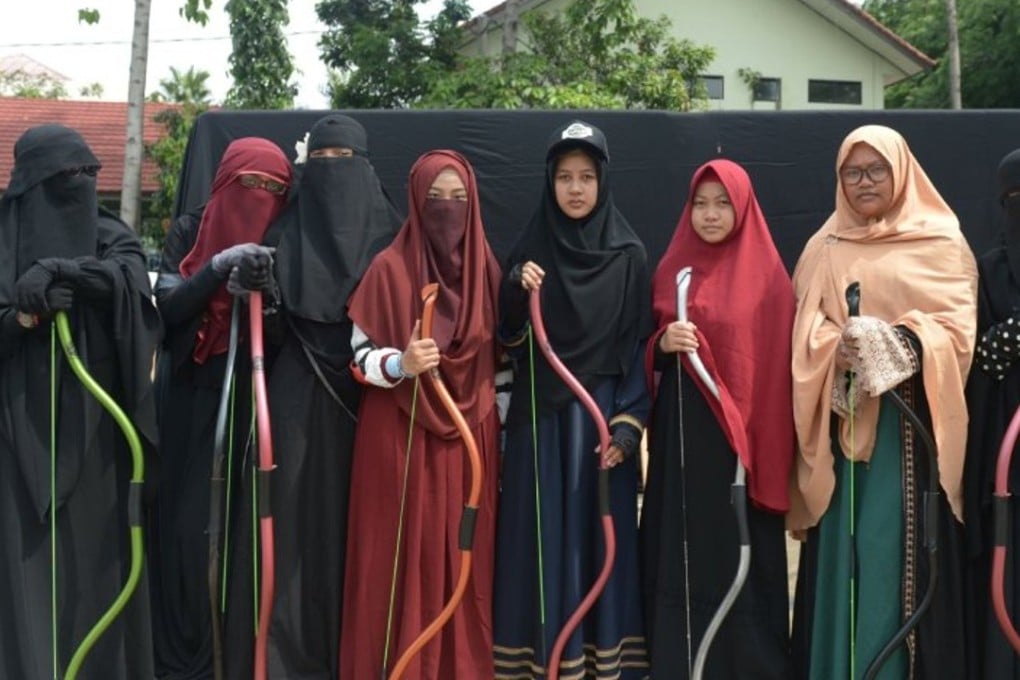Why niqab is being worn by more Muslim women in Indonesia, and a secular nation’s sometimes hostile response to full-face veil
Wearing a full-face veil in a country where most Muslim women choose either a hijab or no headscarf at all is as much a cultural as a religious choice, and one being promoted and defended by groups such as the Niqab Squad

At a small restaurant close to her office in central Jakarta, locals are becoming used to the sight of Tri Ningtyas Anggraeni clad in an all-black niqab, an Islamic garment that covers the body and face, leaving just the hands and eyes exposed.
It’s rare to see a niqab worn in secular Indonesia, even though the majority Muslim population numbers more than 225 million. Most women wear either a hijab – a loose-fitting headscarf or a variation that covers the chest – or no headscarf at all.
A 2015 research report by the Jakarta-based Alvara Research Centre revealed less than two per cent of Muslim women in the capital city wear the full-face veil, but their number is growing, along with niqab-wearing communities across the country.
Scholars say the trend is a sign of increased religious conservatism in the country, but also a cultural phenomenon: women are expressing a personal preference and becoming more attuned to trends in the Muslim world.
In a sign of the division in Indonesia between those with Islamic leanings and those who favour a secular way of life, Tri Ningtyas says she often faces ridicule and abuse for wearing the niqab in public.
She assumes her critics associate the garment with terrorists or extremists. “A lot of people are afraid when they see me,” she tells the South China Morning Post.